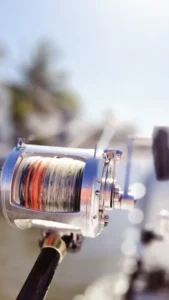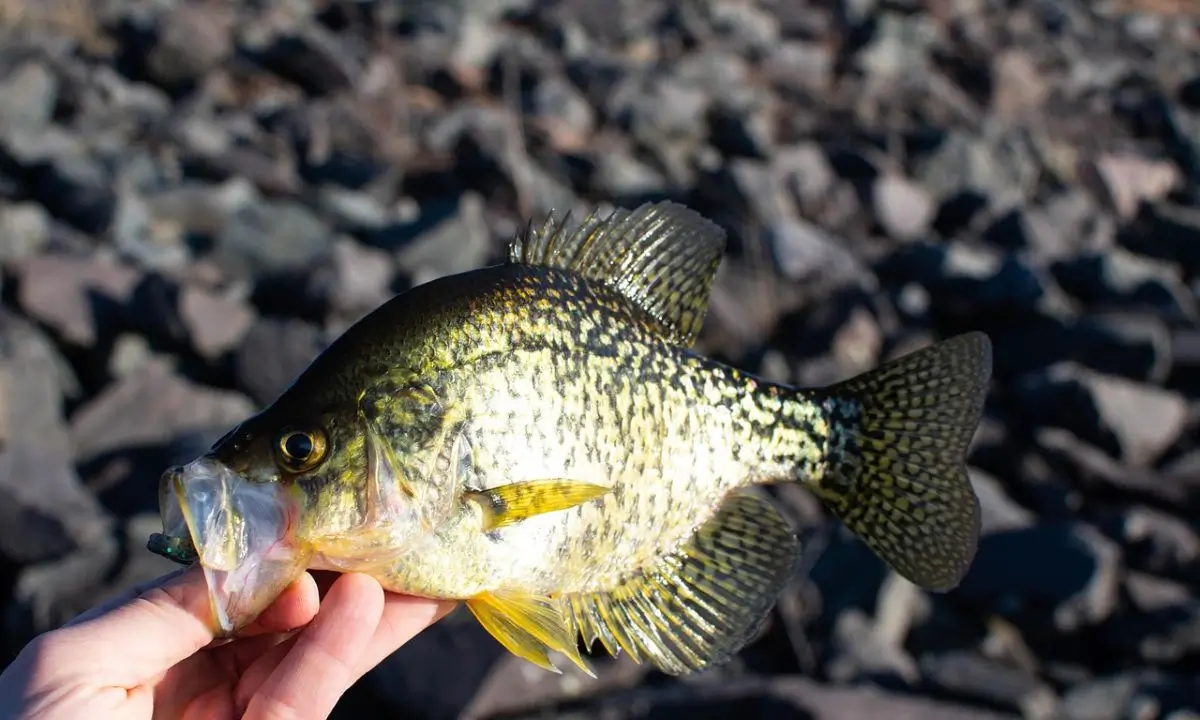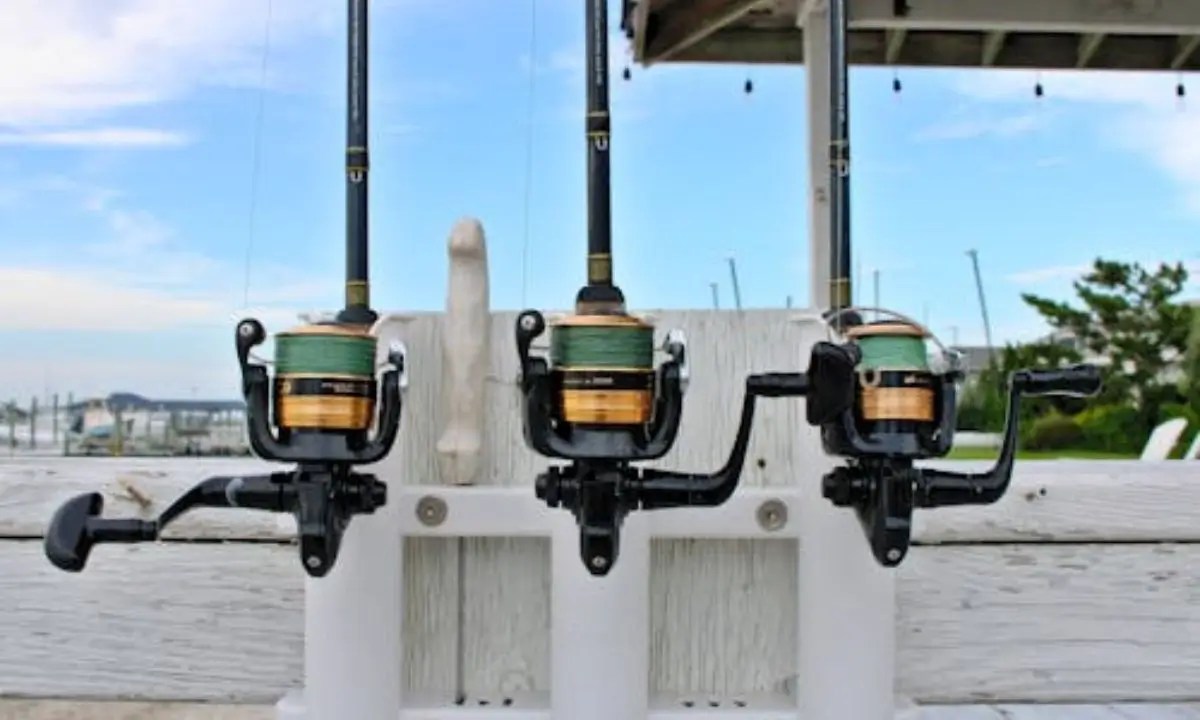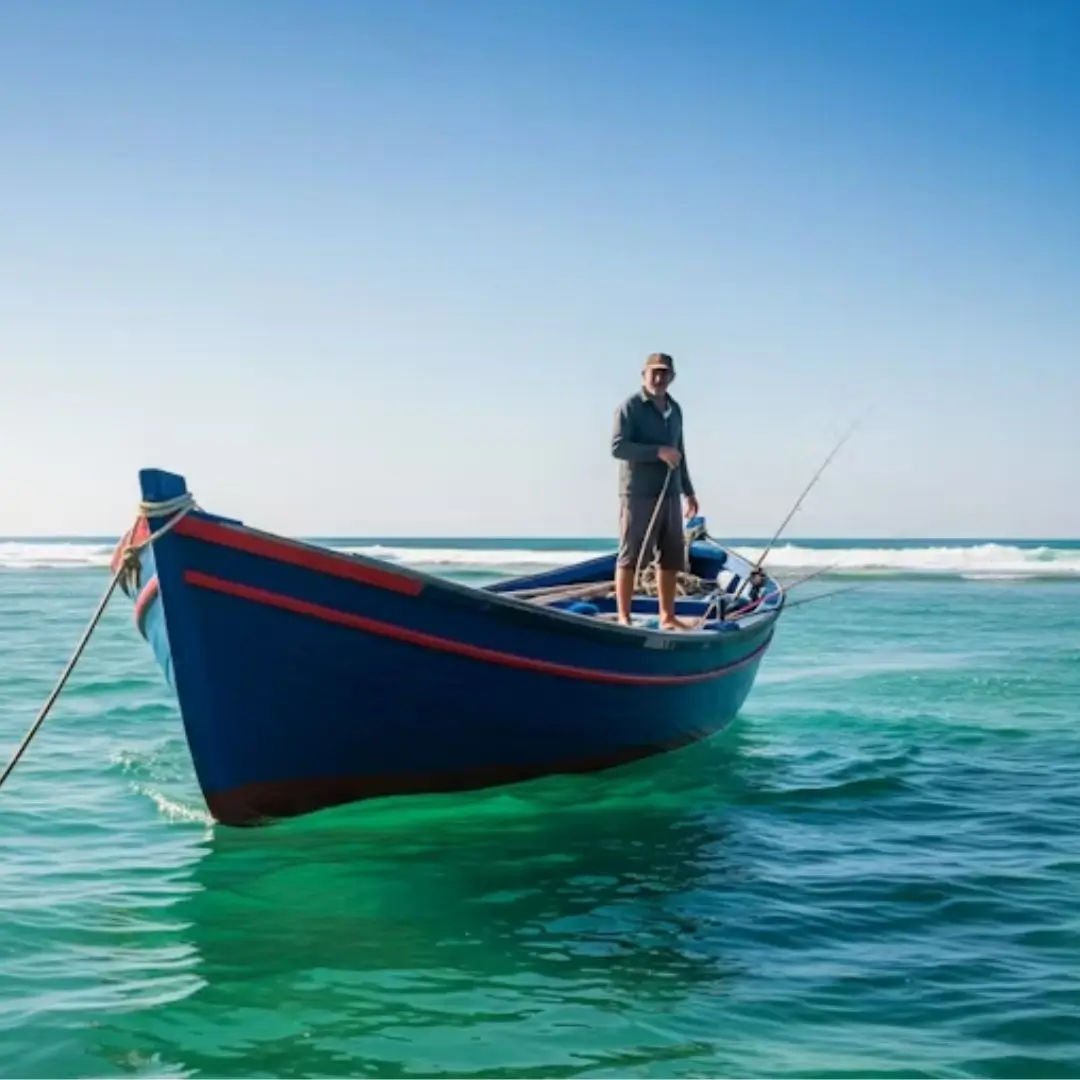Fishing reel gear ratio measures how many times the spool rotates per handle turn. It affects speed and power, helping anglers choose the right reel for bass fishing, saltwater fishing, or topwater lures. Understanding gear ratio improves casting efficiency and catches success.
Introduction:
Fishing Reel Gear Ratio Explained in simple terms. Learn how ratios like 6.4:1 affect speed, power & fishing success. Perfect guide for beginners!
Fishing reel gear ratio is a crucial factor for every angler, especially beginners aiming to improve their fishing game. Simply put, the gear ratio indicates how many times a reel’s spool rotates with one handle turn, affecting line speed and retrieval power. Choosing the right gear ratio ensures smoother casts, faster lure retrieval, and better control while fighting fish. Whether you’re targeting bass in freshwater lakes or chasing saltwater species, understanding low, medium, and high gear ratios helps you match your reel to specific techniques and lures.
In this guide, we’ll break down the mechanics of fishing reel gear ratios, compare the best ratios for different fishing styles, and share expert tips to help you select the perfect reel. By the end, you’ll confidently pick the right gear ratio to maximize your catch and fishing efficiency.
Why Gear Ratio Matters:
When you first start fishing, you’ll come across a lot of technical terms—gear ratio being one of them. At first glance, it might seem complicated. But don’t worry! Just like changing gears on a bicycle helps you ride more smoothly, choosing the right reel gear ratio can make your fishing experience much easier and more enjoyable.
In this beginner-friendly guide, we’ll explain what gear ratio means, how it works, and how to pick the best one for your fishing technique.
What Is Gear Ratio in a Fishing Reel?
Fishing reel gear ratio is a key specification that tells you how many times the spool rotates with one full turn of the handle. For example, a 6.2:1 gear ratio means the spool spins 6.2 times every handle rotation. This number directly affects your fishing efficiency, controlling how fast you can retrieve the line and how much power you have when reeling in fish.
Gear ratios are generally divided into three categories: low, medium, and high. Low gear ratios (around 5.0:1 or lower) provide more power, making them ideal for heavy lures or deep-water fishing. Medium gear ratios (5.5:1–6.5:1) are versatile, suitable for beginners and general fishing techniques like bass fishing. High gear ratios (7.0:1 or above) offer faster line retrieval, perfect for topwater lures or quick action techniques.
Understanding gear ratio is not just about numbers—it’s about matching your reel to your fishing style. By choosing the correct gear ratio, you can cast efficiently, retrieve lures faster, and handle fish with better control. Learning this concept early helps anglers of all levels improve their fishing success.
How Does Gear Ratio Work?
Fishing reel gear ratio works by determining how many times the spool spins each time you turn the handle once. For example, a 6.2:1 gear ratio means the spool completes 6.2 rotations per handle turn. This affects both the speed at which you retrieve your line and the amount of torque or power you have to pull in fish.
Low gear ratios provide more power but slower retrieval, making them perfect for heavy lures, deep-water fishing, or fighting strong fish. High gear ratios spin the spool faster, allowing you to retrieve lures quickly, which is ideal for topwater baits or fast-action fishing techniques. Medium gear ratios offer a balance between speed and power, making them the most versatile for general freshwater and saltwater fishing.
Understanding how gear ratio works helps anglers choose the right reel for different situations. By matching your gear ratio to your fishing style, lure type, and target species, you can fish more efficiently, reduce strain while reeling, and improve your catch rate. This knowledge is essential for beginners and experienced anglers alike. details Fishing Boat
How Gear Ratios Work: Speed vs. Power
Let’s break it down:
- 🎯 Higher Gear Ratio = Faster Retrieve
- Pulls in more line with each turn.
- Great for techniques where speed matters.
- 💪 Lower Gear Ratio = More Torque
- Slower line retrieve.
More power to handle large or deep-swimming fish.
Example: Gear Ratio 5.2:1
If you’re using a 5.2:1 reel, the spool turns 5.2 times per handle rotation. It’s a great choice for beginners who want a balance between speed and strength.
Types of Gear Ratios (Low, Medium, High)
Fishing reel gear ratios are generally categorized into three types: low, medium, and high. Each type serves a different purpose and helps anglers match their reels to specific fishing styles and lures.
Low Gear Ratios (≤5.4:1):
Low gear ratio reels provide more power and torque but retrieve line slowly. This makes them ideal for heavy lures, deep-water fishing, or catching strong fish like large bass or catfish. Beginners may find these reels easier to control when fighting bigger fish because the slower speed allows precise retrieval and reduces the risk of line breakage.
Medium Gear Ratios (5.5:1–6.5:1):
Medium gear ratios offer a balance between speed and power, making them versatile for many fishing situations. They are perfect for general freshwater fishing, bass fishing, and beginners who want a reel that can handle various lure types. Medium reels allow smooth retrieval while still providing enough torque for moderately strong fish.
High Gear Ratios (≥7.0:1):
High gear ratio reels retrieve line quickly, making them ideal for topwater lures, fast-moving bait, and tournament fishing. They are perfect for anglers targeting species that require rapid lure retrieval, such as panfish or striped bass. However, they offer less torque, so they may not be the best choice for heavy lures or deep-water fishing.
Understanding these types helps anglers choose the right reel based on their target species, fishing technique, and personal skill level. By selecting the proper gear ratio, you can improve your fishing efficiency, increase lure action, and catch more fish with less effort. more into Catch Boundary Braided Line
Gear Ratio Chart: At a Glance
For a detailed visual comparison, check out our ultimate Fishing Reel Gear Ratio Chart.
| Gear Ratio Range | Retrieve Speed | Ideal For |
| 5.1:1 – 5.4:1 | Low (Slow) | Crankbaits, deep water fishing |
| 6.1:1 – 6.4:1 | Medium | All-purpose, versatile |
| 7.1:1 and above | High (Fast) | Tumwater, flipping, pitching |
Choosing the Right Gear Ratio
Selecting the right fishing reel gear ratio is essential for matching your reel to your fishing style, target species, and the type of lures you use. Gear ratio affects line retrieval speed, power, and overall fishing efficiency, so choosing wisely can improve your catch rate.
For beginners or general freshwater fishing, a medium gear ratio (5.5:1–6.5:1) is often the best choice. It provides a balance between speed and power, allowing you to handle different lure types, such as crankbaits, spinnerbaits, and soft plastics.
If you plan to fish in deep water or use heavy lures, a low gear ratio (≤5.4:1) is recommended. These reels offer more torque and controlled retrieval, making it easier to reel in strong fish like bass, catfish, or saltwater species.
For anglers targeting fast-moving fish or using topwater lures, a high gear ratio (≥7.0:1) is ideal. High-speed reels allow quick lure retrieval and can cover more water efficiently, which is useful in tournaments or when chasing aggressive species.
Other factors to consider include line type, rod power, and personal comfort. Testing different gear ratios on the water will help you understand which reel suits your technique best. By matching your gear ratio to your fishing style and target fish, you can enhance lure performance, reduce fatigue, and increase your overall fishing success. details Fly Fishing Striped Bass
Best Fishing Reels by Gear Ratio
Choosing the right fishing reel gear ratio also means selecting a reel that matches your target species, fishing technique, and personal preference. Certain reels are designed with specific gear ratios to optimize performance for various situations.
Low Gear Ratio Reels (≤5.4:1):
- Shimano Curado 200K: Ideal for heavy lures and deep-water bass fishing. Provides strong torque for fighting larger fish.
- Abu Garcia Ambassadeur 5500C: Perfect for slow retrieves and controlling heavy lines. Great for freshwater and light saltwater use.
Medium Gear Ratio Reels (5.5:1–6.5:1):
- Daiwa Tatula CT 100HSL: Versatile reel suitable for bass fishing, crankbaits, and soft plastics. Balanced speed and power make it beginner-friendly.
- Shimano SLX DC 150: Offers smooth retrieval and moderate torque. Excellent for general freshwater and inshore saltwater fishing.
High Gear Ratio Reels (≥7.0:1):
- Abu Garcia Revo MGXtreme 7.1:1: Perfect for topwater lures and fast-moving bait. Quick line retrieval helps cover more water efficiently.
- Shimano Metanium MGL 7.2:1: Lightweight reel for rapid retrieval and tournament-style fishing. Ideal for panfish, bass, or species that require fast action.
Comparison Table Idea:
| Gear Ratio | Best Use | Example Reel |
| Low (≤5.4:1) | Heavy lures, deep-water bass | Shimano Curado 200K |
| Medium (5.5:1–6.5:1) | General fishing, beginner-friendly | Daiwa Tatula CT 100HSL |
| High (≥7.0:1) | Topwater, fast retrieval | Abu Garcia Revo MGXtreme 7.1:1 |
Selecting reels by gear ratio ensures optimal performance for your fishing needs. Beginners should start with medium reels for versatility, while experienced anglers may choose low or high ratios depending on their target species. Understanding how gear ratio affects lure action, line retrieval speed, and fish control can significantly improve your overall fishing efficiency.
Common Mistakes Beginners Make
Many beginner anglers struggle with fishing reel gear ratios because they overlook how gear ratio affects speed, power, and lure retrieval. Recognizing these common mistakes can help improve your fishing efficiency and catch rate.
Choosing the Wrong Gear Ratio: Many beginners pick a high-speed reel thinking faster is always better. While high ratios retrieve line quickly, they lack the torque needed for heavy lures or fighting strong fish. Conversely, low gear ratios are powerful but slow, making them less ideal for topwater or fast-moving baits.
Ignoring Lure Compatibility: Not all lures work well with every gear ratio. For example, crankbaits often need low or medium ratios for effective action, while topwater lures benefit from high-speed retrieval. Matching your gear ratio to the lure type ensures better presentation and more strikes.
Neglecting Line and Rod Matching: Your gear ratio should complement your fishing line and rod power. Using a high gear ratio with a weak rod or light line can lead to breakage, while low ratios with heavy setups may tire you out quickly.
By avoiding these mistakes, anglers can make more informed choices, improving lure action, retrieval control, and overall fishing success. Understanding gear ratios early is key to becoming a confident and efficient angler. details Reel Gear Ratios guide
Pro Tips & Expert Advice
Understanding fishing reel gear ratio is important, but applying it correctly makes a big difference in your fishing success. Here are some expert tips to help you maximize efficiency and catch more fish.
Match Gear Ratio to Lure and Technique: Use low gear ratios for heavy lures and deep-water fishing, medium ratios for general freshwater and bass fishing, and high ratios for topwater lures or fast-moving baits. Matching your gear ratio to the lure type ensures better action and more strikes.
Consider Rod and Line Combination: Gear ratio works best when paired with the right rod power and fishing line. High gear ratios with light rods or thin lines may cause breakage, while low ratios with heavy setups can tire you out quickly.
Practice Retrieval Techniques: Try different retrieval speeds and patterns with your chosen gear ratio. This improves lure presentation and helps you understand how your reel performs in real fishing scenarios.
Start with Versatility: Beginners should start with a medium gear ratio reel to experiment with different fishing styles and techniques. As you gain experience, you can choose low or high ratios based on your preferred lures and target species.
Following these tips helps you fish smarter, control your lure better, and increase overall fishing efficiency.
Inches Per Turn (IPT) – An Overlooked Factor
Another helpful number is IPT, or Inches Per Turn. TIt shows how much line is pulled in each time you rotate the handle fully.
- Why it matters: Two reels can have the same gear ratio but different spool sizes, resulting in different IPTs. Tip: Don’t rely on gear ratio alone—check the IPT too when comparing reels.
If you’re confused about choosing the right setup, our full article on what is a good gear ratio for fishing breaks it down by technique and fish type.
Looking for a clear and easy-to-read fishing reel gear ratio chart? Explore our visual guide to compare ratios and choose the right reel for your needs.
Pro Tips for Beginners
✅ Match gear ratio with technique: Don’t use a slow reel for fast-moving lures.
✅ Try before you buy: If possible, test out a few reels to feel the difference.
✅ Maintain your reel: A clean, lubricated reel always performs better, regardless of the gear ratio.
Conclusion
Fishing reel gear ratio is a key factor in improving your fishing efficiency and overall success. By understanding low, medium, and high gear ratios, you can match your reel to the right lure, fishing style, and target species. Beginners benefit most from medium ratios, while experienced anglers may choose low or high ratios for specific techniques.
Properly applying your gear ratio enhances lure action, line retrieval, and fish control. Explore different reels, practice your retrieval, and use this guide to make informed decisions. Start optimizing your fishing setup today and enjoy more productive fishing trips. more details How to Clean a Spinning Reel
Do you think a higher gear ratio makes fishing easier, or do you prefer more torque with a lower one? Share your experience below!
✍️ Written by Jihad – Professional Fisherman
Website: profishingbyjihad.com
What is a fishing reel gear ratio?
A fishing reel gear ratio shows how many times the spool spins with one handle turn. It affects line speed and power, helping anglers choose the right reel for their fishing style.
What gear ratio is best for bass fishing?
Medium gear ratios (5.5:1–6.5:1) are ideal for beginners. They offer balanced speed and power, making it easier to handle different lures and fish species.
What’s the difference between low, medium, and high gear ratios?
Low ratios provide more power but slower retrieval, medium ratios balance speed and power, and high ratios retrieve line fast, ideal for topwater lures and fast-moving fish.
Can I use a high gear ratio for bass fishing?
Yes, but high ratios retrieve line quickly, which is better for fast-moving lures. Beginners may prefer medium ratios for more control while bass fishing.
Does gear ratio affect lure action?
Yes, the right gear ratio improves lure action. Low ratios help crankbaits dive properly, medium ratios suit versatile techniques, and high ratios enhance topwater lure movement.
Do saltwater and freshwater fishing need different gear ratios?
Yes. Saltwater often requires higher durability and sometimes faster retrieval (high ratio), while freshwater fishing can use low to medium ratios depending on target species.
How do I choose the right gear ratio for my reel?
- Consider your fishing style, target fish, and lure type. Match low, medium, or high ratios to power and speed needs to improve retrieval efficiency and fishing success.












